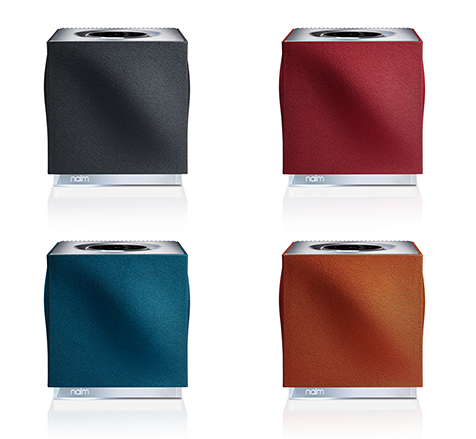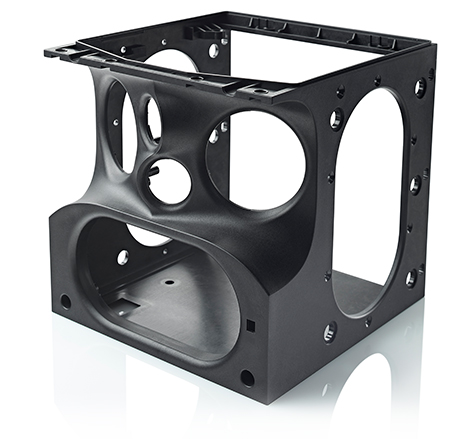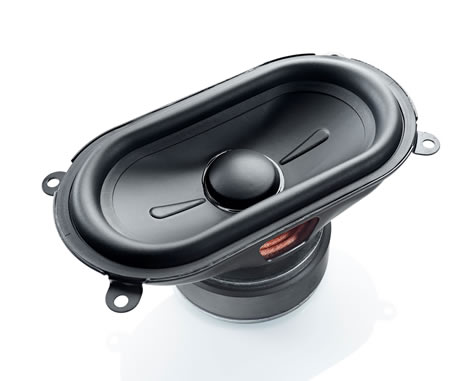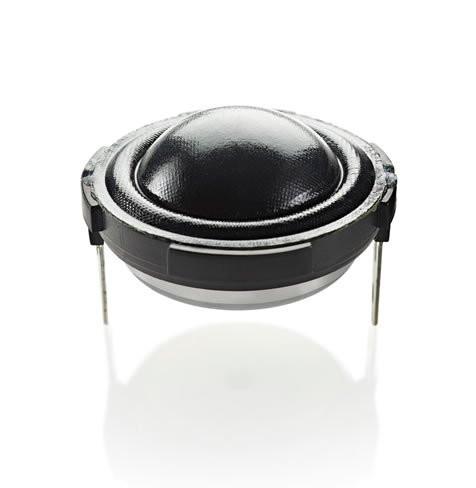As Roy explains it, ‘I've now authored the DSP for Mu-so and the systems for probably 20 Bentley cars, so that history was very beneficial here.’ That, along with experience gained in the use of drive units in small enclosures (such as car doors), and Class D amplification, is an example of how what may seem like individual aspects of the Naim business – as diverse as wireless music systems and the Naim for Bentley project, soon to hit the road as a major feature of the new Bentayga SUV – can inform and assist each other.
And how does he work? Well, his comments at the beginning should give you some idea of how long he’s been obsessing with Qb’s sound: it runs into many hundreds of hours, ‘and when we hit on a DSP configuration that shows promise, then we go on to listening with a number of genres of music, so that can take quite a long time.’
When we speak, there’s still a day or so until the sound needs final sign-off, ...‘so that means I’ll still be working on it for the next day and a half, right up until the last minute. You never know, that final two hours – you might find something quite important…’
It’s one of the beauties of DSP, that work can carry on like this in tandem with the assembly of pre-production trial samples of the product: when the finished tune is agreed, it can then be uploaded into the product in a similar way that Naim’s ND- and Uniti products can have their DSP audio tuning adjusted as part of firmware upgrade – ‘only rather faster’, says George.
A major part of the tuning of the Qb is to ensure a consistent ‘voice’ with the original Mu-so; it’s important if you’re using the Qb as a second zone system that the tonality of the sound shouldn’t change when you move from zone to zone.

Each drive unit is powered by its own channel of amplification, as in the original Mu-so, with the main difference being that Qb has five, not six, channels, delivering 50W apiece to the midrange and high-frequency drivers, and 100W to the bass, instead of the 6 x 75W of the ‘big’ Mu-so.
Matthieu Guilloux explains that this lower output allowed the power supply requirements for Qb to be reduced, helped by the fact that the custom-designed drive units have lower impedance and so are less power-hungry, and that the extra power for the woofer was achieved simply by using both sides of the amplifier chip for a single woofer, rather than driving two as in Mu-so.
The amplifiers here are the same as those used in the larger model: originally chosen by listening tests, they have proved to be reliable in service, and with the intention of Qb sounding as similar possible, the team saw no reason to change.
Lower power requirements also mean less heat, which is good for reliability and stability, as well as simplifying the job of the heatsink, to which the output transistors are directly coupled. Matthieu explains that factory testing over on/off cycles and ambient temperatures ranging from -20C to 80C has been going on for many weeks, chilling the chamber as the unit is turned off and is itself cooling, then ramping the temperature back up with the Qb playing pink noise at full volume.
This accelerated life-testing means that before the Qb hits the shops, it will have proven itself over more than five years of operation – even if when running at full tilt with the chamber near 80C, meaning the temperature inside the Qb was well into three figures, there's been some experience of the glues used inside the new product becoming a little soft! Fortunately those conditions aren't going to be replicated in the real word.
The final part of the assembly is extensive gasketing between the basic five-sided chassis ‘box’, the top-panel and the heatsink/rear panel, each of which is assembled separately and then installed as a complete unit, to ensure the whole product is airtight. Rigidity is ensured by a complex series of mechanical connections between these sections and the main chassis, completed with multiple bolts to hold the whole thing together, where lesser products might just use a snap-fit assembly.
Completing the structural stuff is that clear acrylic base, carrying the Naim logo and providing the impression that the Qb is floating: it is bonded in place, further stiffening the entire ‘cabinet’.
The heatsink rear panel contains precisely routed antennae for wireless connectivity and the physical sockets – functionality is identical to that on the original Mu-so, with UPnP, AirPlay for Apple Music, integrated streaming services (Spotify and Tidal) and Internet radio via wired Ethernet or Wi-Fi, plus aptX-capable Bluetooth, along with optical digital, analogue and iOS-compliant USB sockets.
And of course being a Mu-so, the Qb has a removable grille, allowing the owner to customise the product in one of four colours – (black as standard), with Deep Blue, Vibrant Red and Burnt Orange optional – or just leave it uncovered to show off all the clever stuff going on within.

The grille here is rather more complex than that on the original Mu-so, consisting of a three-sided hinged wrap, still adorned with the same ‘wave’ motif seen on the first Mu-so. This process involved some pretty serious design and engineering in itself, combining as it does ABS panels with polypropylene hinges over-moulded, with the grille-cloth itself tensioned and welded in place.
As became clear when talking to the team, Mu-so Qb may be the company’s most affordable system, designed to introduce even more people to the brand, but this is very much a Naim product through and through, designed, developed and engineered in as painstaking a fashion as every other Naim system.
It’s simple, compact and attractive, but at the same time has 40+ years of Naim expertise behind it, and is every bit as capable of making a statement as – well, Naim’s Statement.



















